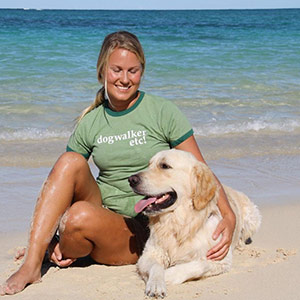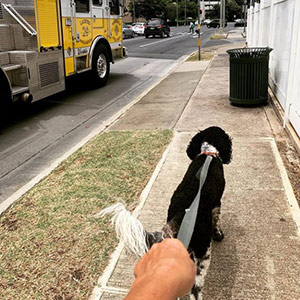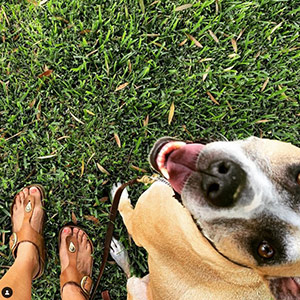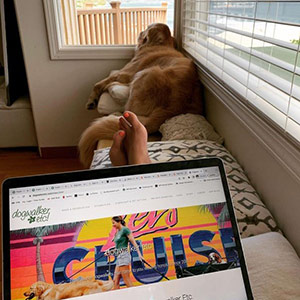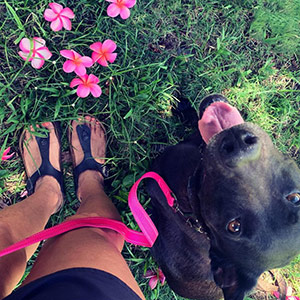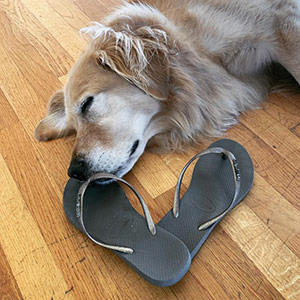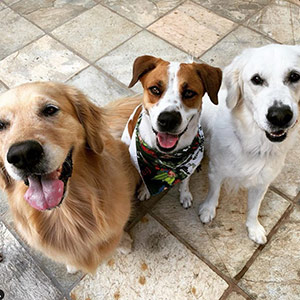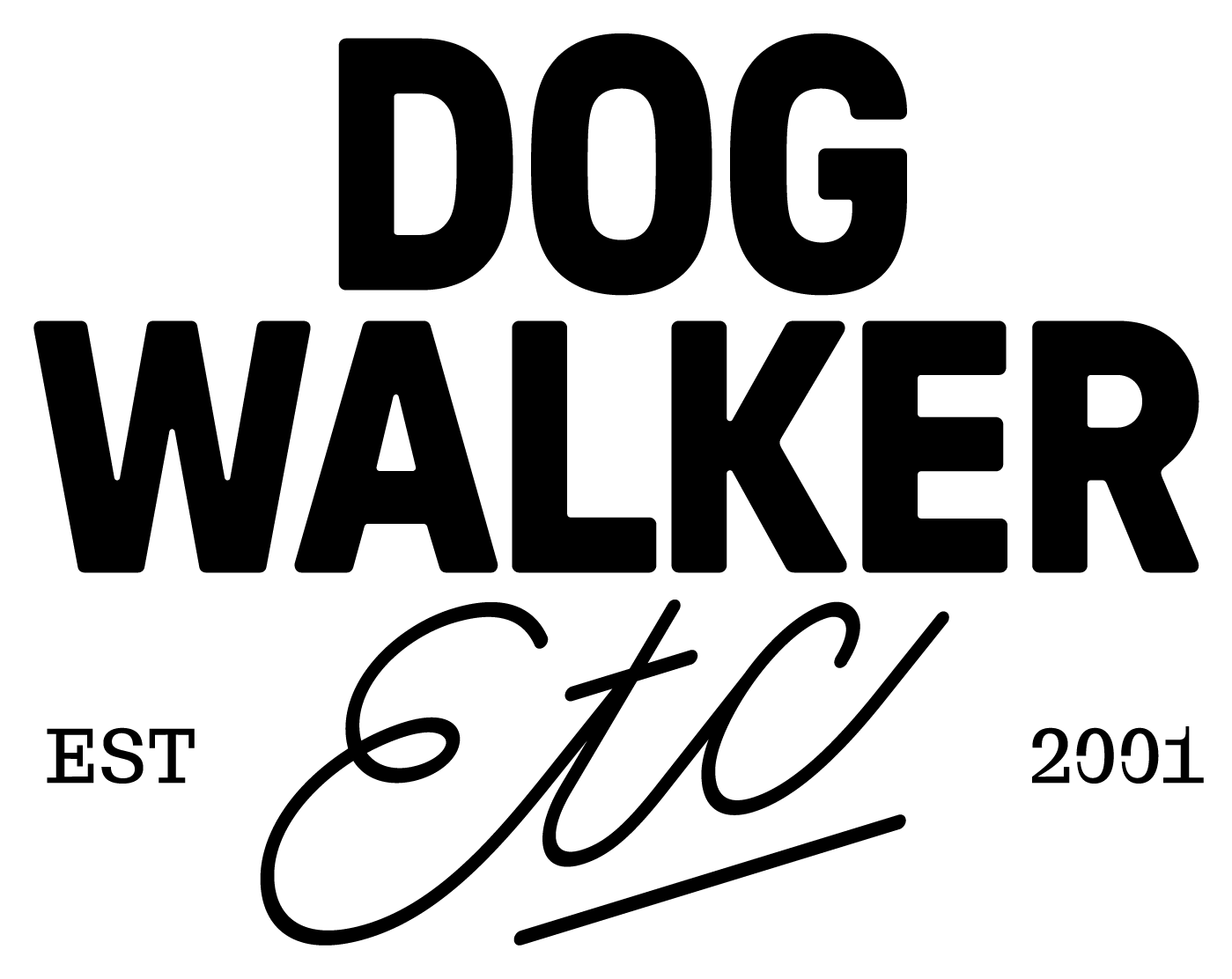



Dogwalker Etc. Blog
Check out our Instagram feed! Click to head over and follow us! Blog stories are below.
volume 23
"The Vital Importance of Choosing the Right Pet Sitter Over App-Based Options"
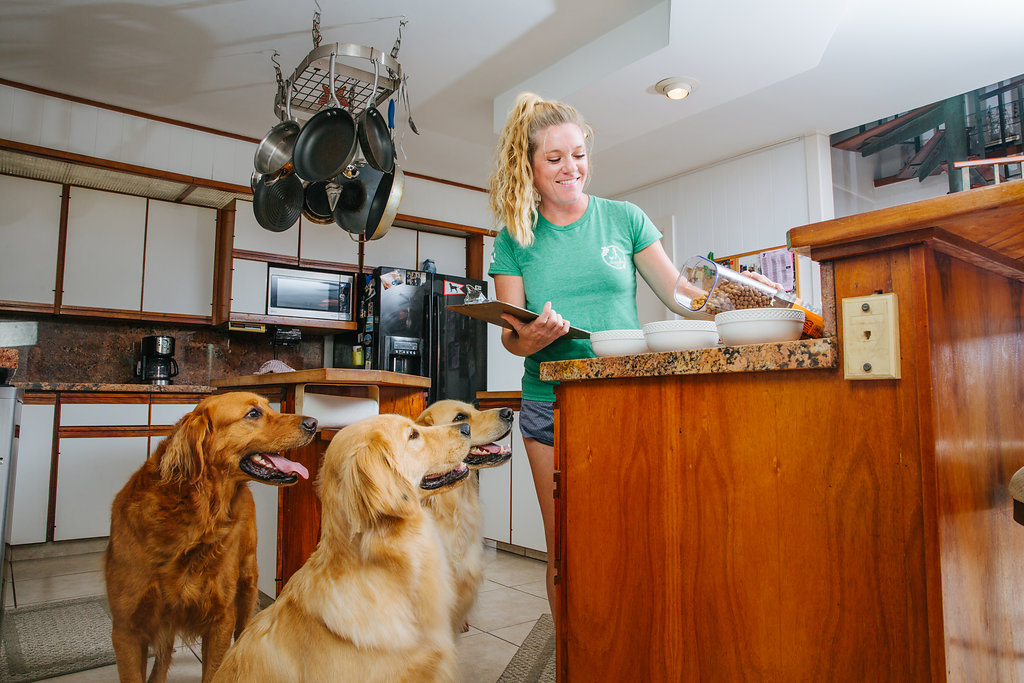
In a world dominated by convenience and digital solutions, pet owners often turn to platforms like Rover to find someone to care for their furry friends. While these apps provide a quick and easy way to connect with potential pet sitters, the importance of selecting the right caregiver cannot be overstated. Here are important considerations why hiring a vetted professional pet sitter is a superior choice compared to entrusting your beloved pet to an unknown person from an app.
- Expertise and Training: Professional pet sitters often undergo specialized training and have a wealth of experience in animal care. This expertise can be crucial in handling various situations, from administering medication to recognizing signs of distress. Unlike a random person on an app, a qualified pet sitter is equipped with knowledge to ensure your pets well-being.
- Customer Care: A dedicated pet sitter takes the time to understand your pets unique needs routines and preferences. This personalized approach goes beyond the basic necessities, providing comfort and companionship that a generic pet sitting service might not offer. Your pet is more likely to thrive in a familiar environment with an attentive and caring professional..
- Reliability and Accountability: When you hire a professional pet sitter, you're engaging with someone who is committed to their job and reputation. These individuals often have established businesses, references, and a track record of reliability. In contrast relying on an unknown person from an app carries inherent risks, as their commitment level and accountability may not be as steadfast.
- Emergency Preparedness: Professional pet sitters are typically well prepared to handle emergencies. They know how to react in various situations, whether it's a medical issue or a sudden change in your pets behavior. A responsible pet sitter will have a plan in place to be able to access veterinary care promptly if needed.
- Security and Trustworthiness: While apps like Rover may have review systems in place, they can't guarantee the same level of security and trust as a vetted professional. Professional pet sitters often undergo background checks and provide references, offering peace of mind that your home and pet are in safe hands.
- Consistency in Care: Pets thrive on routine, and a professional pet sitter is more likely to maintain the consistency your pet needs. An unfamiliar person may not adhere to your establish routines, potentially causing stress and discomfort for your pet.
Ultimately, choosing the right pet sitter is an investment in your pets well-being. While app-based platforms provide convenience, the peace of mind and quality of care that a dedicated professional brings to the table make them the best choice for responsible pet owners. Prioritize your pet's happiness and health by selecting a trustworthy and experienced pet sitter who values your furry family member as much as you do.
volume 22
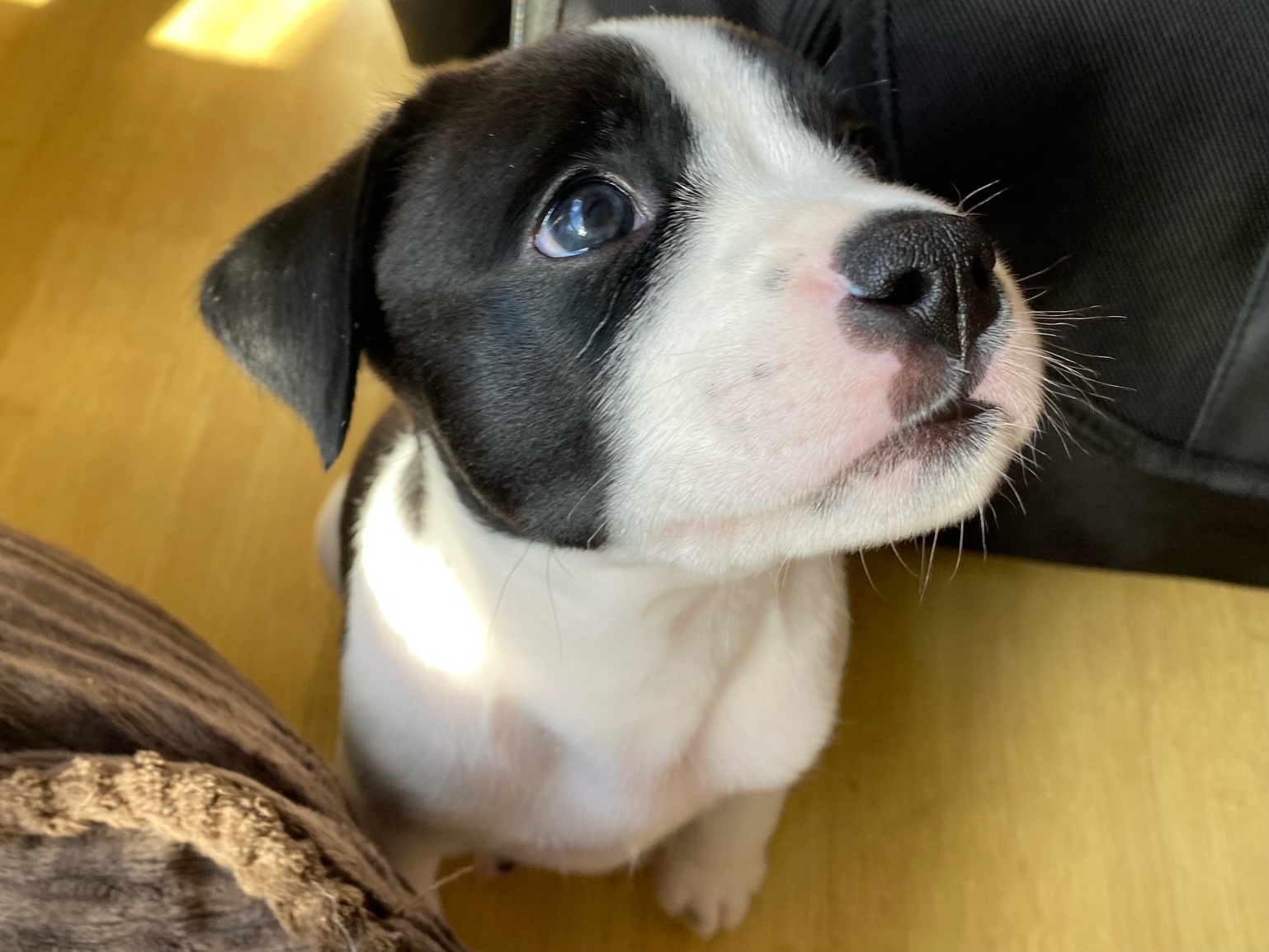
Understanding Canine Reactivity during Transitions: Unraveling the Canine Mind
Transition periods can be challenging for our furry companions, especially dogs, who often display reactive behaviors during these times. Whether it's moving to a new home, a change in routine, or introducing new family members, understanding why dogs react during transitions is crucial for their well-being.
1. Sensory Overload:
Dogs experience the world primarily through their senses. Transition periods can bombard them with new sights, sounds, and smells, leading to sensory overload. This overload might trigger reactive behaviors as a defense mechanism or a way to cope with the influx of stimuli.
2. Fear of the Unknown:
Dogs thrive on routine and familiarity. When faced with changes, they may become anxious or fearful of the unknown. This fear can manifest as reactivity, such as barking, growling, or even withdrawal, as a way for the dog to communicate discomfort or seek reassurance.
3. Territorial Instincts:
Dogs are naturally territorial animals. Moving to a new environment can trigger their territorial instincts, leading to defensive behaviors. Reactivity during transitions may be a result of the dog trying to establish a sense of security in an unfamiliar territory.
4. Social Hierarchy Dynamics:
Introducing new family members, whether human or canine, can disrupt the existing social hierarchy within a pack. Dogs may exhibit reactive behaviors as they navigate these changes, asserting themselves or establishing their position within the group.
5. Lack of Coping Mechanisms:
Unlike humans, dogs cannot verbally express their emotions or understand the reason behind a transition. Reactivity may be their way of coping with the stress associated with change, as they lack other means to communicate their emotions effectively.
6. Inconsistent Reinforcement:
During transitional periods, owners may unintentionally reinforce reactive behaviors by providing attention or reassurance when the dog reacts. This inconsistency can create confusion for the dog, reinforcing the reactive response as a way to seek attention or comfort.
7. Patience and Consistency:
Helping a dog navigate transitions requires patience and consistency. Establishing a predictable routine and providing positive reinforcement for calm behavior can go a long way in easing their anxiety and reducing reactive tendencies.
8. Professional Guidance:
For severe cases of reactivity during transitions, seeking the guidance of a professional dog trainer or behaviorist is recommended. They can assess the specific triggers and design a tailored training plan to address the underlying issues causing reactive behaviors.
In conclusion, understanding why dogs get reactive during transitions involves recognizing their sensory experiences, fears, and natural instincts. By providing a secure and consistent environment, along with positive reinforcement, we can help our canine companions navigate changes with greater ease. Transition periods may be challenging, but with love, understanding, and patience, we can support our dogs in adapting to new situations and environments.
volume 21
Let's talk about all the great things to do on O'ahu with your best friend! This blog will quickly run down some amazing dog-friendly hikes you & your best friend can do together. We'll discuss what to take and the best times of day/year to go. We highly recommend downloading our fave app AllTrails where you can explore with hand-curated trail maps and driving directions as well as detailed reviews and photos from hikers, campers and nature lovers like you.
Dog-friendly
HIKING on O'AHU

photo from Wiliwilinui trail
Wiliwilinui Trail
Koko Crater Arch
Lanikai Pillboxes Hike
Kuliouou Ridge Trail
Manana Trail
Makiki Valley Trail
Makapu'u Lighthouse Trail
Maunawili Falls Trail
volume 20
Is your Pet Sitter Certified?

Why would someone become certified you say? I asked myself the same question for years and I've had the title of "professional pet sitter" for over 21 years. Well this week I finally did it and took the certification test- passed with flying colors!! Not only was it good for me to refresh my knowledge base in things like pet first aid, puppy care and cat wellness but in the ever-growing pet-sitting industry, we "professional pet sitters" need to continue to find ways to separate ourselves from hobbyists (think Nextdoor, Craigslist, FB)...getting certified not only demonstrates our knowledge but also aides in distinguishing ourselves as qualified, competent professionals. Next time you shop for a pet sitter, maybe ask if they've been Certified.

volume 19
Moving Pets to Hawaii

Your pets are part of your family, which is why moving your pets to Hawai’i can be the most stressful part of a move. Our very own office manager here at Dogwalker etc is becoming an expert on the subject as she has moved her own English Cream Retriever from Maui to Arizona, to Costa Rica, back to Arizona and now on to Mexico and Australia! Whew! If you have questions for us on this subject please do inquire through our website!
In the meantime we have found some very good articles that might help give you some pointers. We really loved this article written by local real estate company Hawaii Life. They have broken the moving process into 3 parts with very good questions and easy to execute answers.
Check out an excerpt here...
In Part 1, we’ll give you the answers you need to these important questions:
-
How Do I Know If It’s Safe to Move My Pet to Hawaii?
-
What is the Age Requirement for Pets Moving to Hawai’i?
-
How Much Does it Cost to Transport Pets to Hawai’i?
-
What is the Best Way to Move My Pet to Hawai’i?
-
Where Do Pets Fly in the Aircraft?
To keep reading and find out the answers to those questions click here to find out!
Cheers & Safe travels!
volume 18
Tracking your Pet 101

Millions of pets get lost every year. They either decide to go on a solo adventure or sadly get stolen. It is our responsibility to keep them safe.
If you want to track your pet, here are 2 great options:
- Apple AirTags
- GPS Dog Tracking
Both Systems have their own pros and cons. What's best for you depends very much on your use case. Air Tags are great for iPhone users in urban areas whereas GPS trackers are great for hikers or rural area users. You'll find endless articles on-line to help you decide the best fit for your family! Check out a few great options with these links:
- Whistle GPS Dog Tracker
- Fi GPS Dog Tracker
- Apple Air Tag

volume 17
ARE YOU PROTECTED?

Clever apps abound these days that showcase what seems like an endless smorgasbord of dog walkers and care givers but be sure to read the fine print- they usually provide very little protection to not only the dog walker but also you, your home and your pet! Imagine your sweet little precious out on a walk and the leash breaks! Better hope that Independent Contractor is actually insured otherwise it's all on you to cover costs which can vary from vet bills to court costs & legal fees! Yikes!
Our 21 years of experience with pets and their owners really allow us to understand the needs of our clients whether at work or on vacation. I have always believed, with pet care- it's best to have a cohesive team. Dogwalker etc has always hired and trained a team of employees not IC's. Having a cohesive team allows me to carefully assess each client's needs and then assign the right team member for the family. It also allows us to continuously work with and train staff so our client's get the best care possible! So what exactly IS covered when you choose to work with us...
RELAX, We've Got You Covered:
- Liability Insurance up to $1,000,000 to protect against claims for bodily injury or property damage arising from negligence on behalf of your dog walker or pet sitter.
- Care, Custody or Control provides coverage for the pets and your personal property in our care, custody or control. This also covers pets while in transport in a vehicle, pet taxi or other means. Veterinary medical expenses are also included in CCC Coverage and the policy pays claims regardless of the negligence/fault for accidental injuries to pets.
- Bonding to protect against dishonest acts such as theft of property or money.
- Workers Compensation to protect our team from injuries arising out of work, including medical bills, loss wages and indemnity payments.
- Non-Owned Auto coverage covers against claims arising from auto accidents involving our employees personal vehicles.
volume 16
The Zero-Waste Pet
Solutions Start with Real Food for Dogs & Cats
We are really becoming aware that as pet parents, we need to help our pets on being better stewards of our earth. We can do this by being more conscious of what we buy for our pets, feed our pets, how it packaged and where all this trash goes! I found this article that lays out 7 steps you can take to start making a difference in your world!
read full article by https://thezerowastepet.com/zero-waste-pet-food/
Here are 7 things you can do today, some of which are super simple (see #4) while others take a little more commitment (see #1).
- Get your pet to a healthy weight. Obesity is a massive problem for pets in the United States. Feeding your pet less to get them to a healthy weight–and then maintain that weight–uses fewer resources. Plus, your pet will live a longer, happier, healthier life. Win-win!
- Ditch kibble. Not everyone can (or should) do this depending on your time, your budget, and your pet’s health. However, if you’re able to swap out kibble for a home-cooked diet or a commercially-prepared whole foods diet, then great! If not, no worries. We are ALL about small steps that make an impact. Instead, swap out a portion of your dog’s kibble for fresh ingredients. Chat with your vet about this, but you could diminish your kibble serving by a bit and substitute in fresh fruits and veggies and protein that you and your family cook. For instance, if you grill a chicken breast and a side of roasted green beans, as long as you don’t cook with garlic and onions, you can lessen the serving size of your dog’s dinner and top it with the fresh food. The myth that pets can’t eat “human food” is just that: a myth. Food is food. Just make sure you run it by your vet while keeping an eye on your pet’s weight (see point #1).
- Buy bulk dog food. Cutting down on packaging is a big step, too. Co-op grocery stores, health food stores, and even farm and feed stores often sell bulk dog food. Take your own container and be proud of that big step!
- Buy food with grains. Seriously. The grain-free fad is just that: a fad. According to Dr. Heinze in the article cited above, “Cats and dogs can eat diets containing properly cooked grain and other plant ingredients. Contrary to many reports, there are no documented health benefits to feeding pets a grain-free diet or one that avoids other plant ingredients. According to a recent study, one of the main genetic differences between dogs and wolves is that dogs have an increased ability to obtain nutrients from grains and other plants. Current grain-free diet trends are about selling pet food, not about pet health, and can lead to less sustainable diets.”
- Offset your pet’s consumption. Consider making vegetarian or vegan swaps for you and your family to counter what your pets need. Plant-based proteins take far less to produce. If this is new to you, start small. #MeatlessMonday is a great starting line, then build from there. We make lots of small swaps around here–like vegan mayo for regular and so on. None require any extra expense or effort, but it helps us counter what our two cats consume! We also share fresh fruits and plant-based proteins with our pets where it makes sense–all while watching their waistlines, of course!
- Make your own treats. You can control the ingredients, and you can be entirely package free. Look for a few DIYs coming soon. And, psst, I share a ton of recipes in the full guide to raising The Zero-Waste Pet.
- Find alternative protein sources. I saved this for last because it’s my current obsession. Two things to consider here: First, protein sources that require few resources to produce. An example is crickets. With less water and less land consumption, crickets provide a sustainable protein option and, tbh, we’re slow on the uptake with this. Lots of other countries already consume insect protein! Second, invasive species that need to be managed already. An example is Asian carp. It’s a rich protein source that thrives in places like Lake Michigan, where it doesn’t belong and where it degrades the natural environment. Since it has to be removed anyway, why not use it for pet food?
_________________________
volume 15
It's HURRICANE Season Folks

June through November
Top Tips for Keeping Your Pets Safe During a Disaster
Keep items in an accessible place and store them in sturdy containers so that they can be carried easily. Your kit might include:
- Sturdy leashes, harnesses and/or carriers to transport pets safely and ensure that they can’t escape.
- Food, drinking water, bowls, cat litter/pan and a manual can opener if you pet eats canned food.
- Medications and copies of medical records stored in a waterproof container.
- A first aid kit.
- Current photos of you with your pet(s) in case they get lost. Since many pets look alike, this will help to eliminate mistaken identity and confusion.
- Information on feeding schedules, medical conditions, behavior problems, and the name and number of your veterinarian in case you have to foster or board your pets.
- Pet beds and toys, if easily transportable.

volume 14
Sunscreen for Dogs!

It's SUMMER in the beautiful Aloha State...and did you know that dogs can get sunburned JUST like us humans!
We like to make sure our client's are covered so we found this article by the AKC to help explain how to help our 4 legged friends stay COOL!
Sunscreen protects dogs from sunburn. But using the wrong type of sunscreen can also cause problems. It’s highly important that you only use formulas that are specifically intended as sunscreens for dogs. They should not contain zinc oxide or para-aminobenzoic acid (PABA), as these ingredients are toxic to dogs if ingested, and dogs will often lick their skin and accidentally ingest the sunscreen. It’s also a good idea to look for a waterproof, unscented dog sunscreen with a sun protection factor (SPF) of 30.
How to Apply Sunscreen to Dogs
So how do you get your dog-safe sunscreen on your wiggly pup? Carefully. First, test a small amount on one spot to be sure it doesn’t cause an allergic reaction. Next, be sure to put it on the spots most exposed to sunshine, such as the bridge of the nose, ear tips, skin around his lips, groin, and inner thighs – and anywhere else where pigmentation is light. When applying it to you dog’s head, be sure not to get any in his eyes. And once you apply the sunscreen, watch that your dog doesn’t lick it off for about 10 or 15 minutes – until it’s been absorbed.
You should apply sunscreen about 20 minutes before your dog goes out. And while he’s out in the sun, reapply the sunscreen every four-to-six hours or after your dog goes swimming.
Sunscreen Alternatives
Rather than lathering sunscreen over your dog’s entire body, consider investing in protective clothing. Several companies make sun shirts or suits for dogs that cover large areas of their bodies, saving you the worry that your pup will lick any sunscreen off. This Hurtta Sun & Bug Blocker Dog Suit has a UPF protection of 40 and also protects against mosquitoes and other insect pests.
To read the full article click here!
volume 13
New Year's Resolutions for Pet Owners!
Many of us create a short list of New Year's resolutions to make the coming year better than the last.
If you're ready to make some healthy changes- check these out for you & your furry family members!
Not enough time? Let us help you stick to your goals! Check out these awesome new year's resolutions for you & your pets...
- Walk Dogs Daily: We book our dog walks in 30/45/60min walks around your neighborhood! Prices for monthly memberships start at $23 per walk
- Feed Healthier Diet and Treats to Pets . Ask your veterinarian for food recommendations appropriate for your pet’s species, age, breed and lifestyle. Feed the recommended amount, and limit treats to small goodies in limited portions, breaking up treats is you need to. Add in some healthy items, such as bits of carrots, apples and blueberries. Click here for our fave local treat shop!
- Take care of your pet’s teeth and gums. This can be done yourself or if you prefer to have a professional do it. Click here for a short DIY tutorial
- Attend Training or Obedience Classes Please please please ensure your dog is a good walker outside (no lunging, pulling, aggression). It will make life easier for you and for us! Safety is always our top priority and unfortunately we have to say no to good dogs due to leash manners.
-
Enroll Pets in Pet Insurance If you have a new dog this is a MUST (especially purebred pups prone to certain medical issues). Click here for Pet Insurance
-
Go on an Adventure with Pets: We LOVE a good adventure to the ocean to swim or mountains for a hike. Our field trips last a min. of one hour and start at $38/adventure. Contact the Dogwalker etc office today!

volume 12
Happy Holidays, Dog Cookies!
Christmas preparations are in full swing but have you been thinking about your dog’s Christmas in all that rush? Check out this recipe for cookies you can make your four-legged best friend happy during this holiday! Cookies are an essential part of Christmas for humans, and there is no reason why your dog shouldn’t enjoy them in this amazing time of the year too. Try this easy Peanut Butter Cookie recipe from The Cookie Rookie
Happy Holidays from our family to Yours, Cheers ~
"Easy Peanut Butter Cookie recipe"
volume 11

volume 10
"Dog-o'-Lanterns"
A New Favorite Halloween Pumpkin Carving Trend!
Wondering what to do this weekend? Check this out when carving your pumpkins this year- you can dedicate it to your PET! No matter your art skill level, I highly encourage anyone to pick up the carving tools and try your hand! Wondering where to pick up a local pumpkin? Check out Aloun Farms on Oahu :)
- Create a stencil of your pet
- Transferred stencil to your pumpkin
- Cut a few major shapes from your pet's portrait
- Carefully scrape away bits of the pumpkin skin, but not cutting all of the way through to get a portrait depth that's perfect for your adorable pooch
- Light candle and voile!
For more inspiration, scroll through the #dogolantern hashtag on Instagram. You won't regret it.
volume 9
A Broken Heart's Survival Guide
I love all dogs but there have been a few that stole my heart! Isabella joined my life in 2004, she was the cutest thing I'd ever laid eyes on. "Isa" was a Cavalier King Charles Spaniel puppy born from two DWE clients. I visited her mom Mele every week throughout the pregnancy and when the pups were born I bothered them as much as they'd allow me to visit the house!! Finally at 8 weeks, I took my first baby home with me and she was perfect!
As Isa grew I home-cooked her food, bathed her every Friday without fail and took her everywhere I went. She eventually developed the typical CKCS ailments. She lived a beautiful life til the age of 12.5, pretty good for a girl with a stage 4 heart murmur since age 2! Isabella's passing was sudden and unexpected in the middle of the night. I knew she was getting up there but no parent wants to think their time is winding down. I was shocked and numb. A suddenly quiet house was unbearable. I just wanted to sleep. I even researched if it would be possible to erase her from my memory because the pain was so unbearable. And at the same time, I realized I had to move each day, I had to go on.
Dreaming up ways to memorialize Isa became a joyful objective in first few weeks. What pictures I wanted to frame and what the frame itself would be! Those little details gave me hope and got me to the end of my day. The best way to not feel hopeless is to get up and do something. I commissioned a painting of her, as big as it could be! The artist I chose, Courtney Kelly, painted dogs full of whimsy and fun, just like her. The painting took a few months to complete and each week Courtney would send me little updates on it's progress, each week that gave me hope.
Four months after Isabella passed I thought I could maybe try fostering a pup- under NO circumstances would I keep it! Just trying to do my part to help out a rescue organization and as a plus, love a scared homeless pup! I contacted my colleagues at the local non-profit, FurAngel Foundation and said I might be open to the idea. Within a day Tiffany called me back and wanted me to meet Daisy, a little scrappy pup that kept escaping the fencing at her current foster situation. Sounded like a headache I did not want but I drove to the North Shore to meet her anyway. I arrived midday and walked into the waiting area. In minutes the head of operations brought out this hairless shaky little girl and promptly shoved her into my arms. "Here" she said, "Don't let her fool you, she won't break, she just needs a lot of love!" I sat down on the floor and held Daisy for the next two hours. I hadn't even realized how much time had passed! I gave her back to the director and said I'd let them know. I left- YES I actually left! I couldn't sleep all night, my thoughts now only on Daisy and how much I needed to help her, I could save her- and how she could save me! I drove back to the north shore early the next morning and scooped her up. Daisy has now been a part of my dog filled home since 2016 and was my saving grace in learning how to love again. I haven't commissioned any life sized paintings yet but it's not out of the question!
 Isabella 2.6.2004
Isabella 2.6.2004 
volume 8

First Aid & Prevention:
WHO: Amphibians secrete a mucus through their skin to help evade predators, but in some species this slime is toxic! If you haven't already met, please allow me to introduce you to the CANE/BUFO TOAD! Toad poisonings are very common. During evening hours when Bufo's like to come out, many dogs and some cats mouth the toads and become poisoned. The toxicity can be serious and life-threatening if not addressed and treated properly.
CLINICAL SIGNS: signs will vary dependent upon the amount of toxin that is absorbed by your pet and the length of time since exposure to the toad. In general, toxicosis can cause cardiac arrhythmias, increases in blood pressure and hallucinations. Soon after exposure, you may notice your pet experiencing severe head shaking, pawing at its mouth as if irritated, a foul odor and hypersalivation. If untreated, the toxicosis may progress with clinical symptoms of incoordination, vomiting, diarrhea and an increase in respiration rate. Severe cases may lead to blindness and convulsions. Death results from a critical form of a cardiac arrhythmia called ventricular fibrillation that has been reported to occur quickly within 15 minutes from the time of exposure
TREATMENT: To prevent absorption of the toxin into mucous membranes immediately begin rinsing out the mouth of the animal with copious amounts of water. Usually, a garden hose is recommended to accomplish this. It is important to direct the nose of the animal downwards to allow the water along with the toxin to flow out of the mouth. Do not allow the animal to drink or swallow the flushing water; hence the water is contaminated with the toxin and can be absorbed at the lower mucous membranes of the gastrointestinal tract. At the same time you should be seeking veterinary advice or already in route to your vet's office!
PROGNOSIS: For most pets (especially those in here in Hawaii) the prognosis is usually good with treatment. However, Bufo encounters can be fatal so always be vigilant when allowing your pets outside in the evenings. Likewise, if you happen to cross the path of a smushed Bufo in the road, remember that slime/toxins may still be on the skin and best to avoid when walking.
volume 7
Should My Dog Walker Have Insurance? Absolutely!

Paying for Peace of Mind...
Hiring a professional dog walker or pet sitter offers a greater chance of avoiding accidents altogether. But even when accidents happen, you want the issue resolved without having to file a claim against your own homeowner’s insurance or worse, be held liable.
We always suggest you do your homework when interviewing a pet sitter and/or dog walker for your baby. Many independent dog walkers or pet sitters will not carry their own Business insurance policies. They are costly and often, out of range of a one-person operation. You’ll want to read closely, the level of coverage provided by referral or match-making sites like that simply pair you with someone who filled out an on-line profile. Our staff are personally interview by the company's owner, background checked & trained before beginning assignments.
The pet sitting and dog walking industry has grown exponentially in the past ten years and while competition may drive prices down, be careful to consider your total costs, including any risks. Since 2001, Dogwalker etc has offered Oahu's pets reliable and trustworthy Pet Sitting and Dog Walking services. We’ve had insurance policies in effect since the beginning, as every professional service should. Feel free to give us a call, text or email at [email protected]
∼
Here are some actual claims published recently by the company we use for General Liability, Bonding and Workers’ Compensation coverage: Business Insurers of the Carolinas:
- While staying at the pet sitter's home, one dog was running around and another dog gave chase. An altercation occurred. One of the dogs suffered multiple injuries. Total paid $49,998.00
- A puppy in the care of a pet sitter ingested a foreign object and required surgery. Total paid $1,381.00
- A pet sitter was walking a client's dog when a person approached them on the sidewalk. The person leaned down to pet the dog without asking and the dog jumped up and came in contact with the person's mouth. Total paid $20,000.00
- A dog ate sheetrock off the client's wall and became sick. Total paid for vet bill and wall damage $6,218.00

volume 6
Right around the corner, September is Pain Awareness Month. Started in 2001 by the American Chronic Pain Association, this annual event raises public awareness of issues around pain and pain management. Now is a great time to learn about symptoms of pain in cats & dogs.
Cats and dogs experience many types of pain, just like we do. Being injured or having an illness is unpleasant to experience and causes a different type of pain. Our pets can also be prone to these conditions that lead them to feel pain.
So how can we tell if our pet is in pain? In some cases it's quite easy but in others it may not be so obvious. Check out the chart here for some obvious & more subtle signs of pain in cats and dogs...

It is important to recognize these symptoms. Depending on the type of pain your pet is experiencing, different treatment options will exist. Working together with your pet's vet can determine the best treatment plan to help your pet feel better! If you notice your pet displaying signs of pain, contact your vet- do not give your pet any human pain medications unless directed by your vet as certain human medications are toxic to pets. If your vet is unavailable and you feel the situation is an emergency, contact VERC which is open 7 days per week/24hrs per day specifically for pet emergencies!
VERC (Veterinary Emergency and Referral Center of Hawaii)
1347 Kapiolani Blvd #103, Honolulu, HI 96814
volume 5
Can you tell them apart?
Golden Retrievers and Labrador Retrievers...
Which Is the Best Fit for You?

The American Kennel Club (AKC) classifies dogs into seven categories, based on the type of purpose the dogs were originally bred to have. Goldens and Labs are from the sporting group and as retrievers, are often exceptional outdoor companions, exercise buddies, and family members.
Sunny (doggo on left) is my dog; she is the sweetest (I'm not biased)! Sofia (doggo on right) is also the sweetest however she's one of our awesome private boarding clients!! These girls have loads in common BUT they are as much different as the same. When I walk the girls I'm always amazed at how many people stop us to comment on them, so cute! I'm also amazed at how many people do not know the difference between the two breeds. It's because of these differences I urge prospective owners to do their homework. The more you know about a particular breed's general characteristics, health, and environment for his best life, the greater chance you'll have choosing a terrific pet!
Similarities include:
- Goldens and Labs live best in an environment with a bit more space, such as a large fenced backyard.
- They're super pets for families with children, especially when socialized at a young age.
- They both do well with other pets too.
- As retrievers, they're usually good swimmers, because they were bred to fetch waterfowl for hunters.
- Both breeds live approximately 10–12 years.
Golden Retriever vs. Lab:
Which Breed Is Right For You?
It simply depends on which one fits your personality and lifestyle. Labs generally require more stimulation and exercise than a Golden. Here's a little cheat sheet.
You could be more of a golden retriever lover if you're:
- Appreciative of a good-natured pooch simply happy to exist, even if she might not have many ideas of her own.
- Not planning to leave her alone for long stretches of time during the day.
- Able to provide a solid training foundation so she can be an eager helper in the family and stay mentally and physically stimulated.
You might prefer a Labrador retriever buddy if you:
- Really desire a canine best pal and loyal companion AND can say no to extra begs for treats!
- Understand how smart he is and keep him engaged with physical and mental opportunities.
- Are able to manage his need for balance between activity and downtime.
- Can train him for useful work such as hunting, fishing, farm chores, and so on.
volume 4
"TALES From the STRIPY RUG"
Luxury Private Boarding is one of our most requested services!
I started DWE in 2001 with the premise that I would always travel to the client's home. However over time, client's expressed the need (or desire) to simply lock up their house and travel without pets back at home. Whether it's the way we were raised ("dogs go to kennels") or out of necessity (a tented house) I started to offer private boarding in the homes of our employees. Trust me, everyone thinks they can board a pet but not all homes (or pet sitters) are created equal! I carefully vet each staff member and inspect their homes as well. If I wouldn't leave my pets there- I won't leave yours! I want each guest that stays with us to feel like family; loved and safe, cuddled and cared for (just like home). We never use kennels or crates and we keep guest numbers low to keep an intimate level of care.
We have homes across Oahu to welcome clients (mostly dogs although some homes welcome cats!). Keep in mind- not every dog is a fit for private boarding. Dogs with issues like separation anxiety, used to living outside or lack of socialization with other pets are usually better off staying in their own home with one of our professional house-sitters! We make sure to provide a complimentary interview to see what fits your family best. And each stay is complete with lots of photos showing how much fun your pet is having on their vacay while you're off on yours! Hence- "the stripy rug" pics...I have so many but these are some of my faves.
In my home I have this blue/white "stripy" runner, it seems to be where so many of my photos are taken- haha! It's soft enough for a dog nap but durable enough to take all those tiny dog butts sitting pretty on it! The thing I love most about it is I can WASH IT! With dogs (and kids) you can have beautiful things but they better be washable! Love this backdrop, it's welcomed so many of my favorite pups :)
And...if you think you could handle these faces- we're always looking for new homes! Click to apply here!

volume 3
Dogs need exercise every day and a lot of pet parents ask us “when is it too hot to walk my dog?” during these hot days. It can be easy for your dog to overheat, so it’s important to understand what your dog can safely handle. Even on hot days, it’s still inevitable that you’ll have to take your dog outside to go to the bathroom. There are lots of things you can do to keep them cool even when the temperature is over 86'F. As midday dog walkers, we like to find shadier paths instead of walking in the direct sun. It's also a good idea to walk on the grass/dirt instead of pavement so that they don’t burn their paws. Plan out your path so that you can have stops every so often in grassy or shaded areas so their paws can get some relief. AVOID the metal sidewalk covers, those can scorch paws/pads in seconds!
PRO TIP: If it is too hot for you to walk outside barefoot, it is too hot for your dogs, too! Always feel the pavement with the bottom of your bare hand before letting your dog walk on it. If you cannot comfortably hold your palm to the asphalt for 10 seconds or more, it is too hot for your dog’s paws. Unfortunately, pets can and do suffer burns on their paw pads from walking on surfaces that are too hot. Burned paw pads may look swollen, red, or blistered. Burns to the paws are a serious medical issue and require prompt attention from a veterinarian.
PRO TIP: Dogs that are short-faced, such as Boxers, French Bulldogs, English Bulldogs, Pugs, Pekingese, Boston Terriers, and Shih Tzu’s are dogs that typically overheat very quickly in hot temperatures. Overweight dogs are also much more likely to overheat and have a higher risk for dehydration.
If your schedule doesn’t work for walks, give us a shout!
We’d love to make sure your dog gets all the exercise they need and still stay cool! 808-384-3164
volume 2
These are a few of
my favorite things!
If you have a dog that pulls or lunges on walks this blog is for you! We have loads of clients that absolutely ADORE their pets but for one reason or another (lack of experience, time, budget) they skip the training and end up with a walk that's just not enjoyable for anyone. It repeats itself and eventually you end up with a bored destructive dog- boo! I've met many of these dogs and with the two products mentioned here, gotten successful results in making the walk fun again!
The Easy Walk Harness is my go to piece of equipment for dogs if they're not the best walkers. I myself have a rambunctious, loving golden retriever named Sunny. She wears this for every walk (she sports the red/black version). Easy Walk Harnesses are pretty straight forward, but they can be complicated if you aren’t sure how they work. Before you purchase one, we suggest reading up on them so you know exactly how to put them on. Easy Walk harnesses actually encourage dogs to focus on their owners and redirects unwanted behavior like pulling without causing harm or frustration to your dog the way some traditional harnesses or choke and/or prong collars can do.
Conversely, traditional dog harnesses that clip from the back can actually trigger your dog to pull. Many traditional harnesses press against your dog’s throat and can cause choking and, in severe cases, lead to tracheal collapse. Since many dogs have a natural instinct to pull against things that are either tugging against them from behind or putting an uncomfortable amount of pressure on their throats, it makes sense as to why traditional dog harnesses and collars don’t always work.
Spray Shield Animal Deterrent Spray is my other "do not leave home without". A little more complicated getting in Hawaii (due to shipping) but worth the effort to have. This little bottle contains a Citronella spray formula and offers a humane way to deter aggressive animals (I can attest to it- I have had to use it and it works!). Spray Shield's formula is just as effective as 10-percent pepper spray, yet without harmful side effects in cases where it may blow back into your eyes/throat or the animal's eyes/throat. Spray Shield is highly effective in stopping low- to medium-level aggression and safe to use indoors. Dogs can sense our energy and if you're calm, they will tend to remain calm as well but this little bottle gives you reassurance you have a plan in case the unexpected happens.
I know you're wondering "Is she just recommending these cause she's sponsored?" No but I should be! (pssst if you're reading this Easy Walk or Spray Shield)! Over the last 20 years I have been a great advocate for both these products because THEY WORK! So there's my walking 101 tips/tricks to try if you have a dog that pulls or lunges.
~ Erin
And training is great, it's never too late! Here's a few great local dog trainers we know:
volume 1
"The Pandemic Life (and Pet Care)"...

2020 was like no other! For us, the industry was grinding to a halt. It was as if life stopped, a deep freeze. Taking a snapshot from our clientele, it was crazy to watch the pandemic not only change our lives but everyone's so rapidly. Our clients that work within the medical field were busier than ever fighting to keep us safe. Our hard working teachers, pilots, waitresses, actors, hotel managers, mothers, fathers, now found themselves without direction and dying to get out of the house. Memes of people walking their dogs 20 times per day started to circulate social media- very funny but scary for us, "hey that's my job you're too busy remember!" With uncertainty on the horizon, fear grew and people stayed home.
Thankfully our little business was deemed "essential" by the state and we were able to continue working for whatever work still existed throughout each lockdown.
The Pandemic Life was new to all of us. Neighborhoods that I had walked through for 19 years now looked like never before. In late March 2020 the streets were abandoned and it seemed like we were walking through a zombie apocalypse movie set! In the next few weeks, the streets became filled with folks dying to get outside, the whole family in tow. People were cautious and nervous, not making eye contact and keeping to themselves. I knew everyone was silently thinking, "do they have it?!"
One of my favorite things to do at that time became taking photos of dogs in the middle of an empty road (parks were closed with a $5000 price tag of you dared enter)! Streets that were that once filled with traffic and tourists now became our stomping grounds. The world became serene & quiet but we silently worried, what if this is the new normal, how long will this last?"
Fast forward to Summer 2021 and boom! ~ it feels like the industry is rebounding! In the silent year that was 2020, it was probably the one year where I saw more families get a pet than ever before. The Hawaiian Humane Society actually had no animals available to adopt on more than one occasion! Anyone who had reasonably argued in the past "I would love a dog but i work too much" or "I'd love a pet but I'm never home" now had nothing holding them back!
So now what...folks are heading back to work; leaving for vacations again. I see loving pet owners all the time struggle with the decision of what to do when they leave. Well, we want you to know, we got you covered! We are not just a dog walking company. Our vetted team provides our clientele with peace of mind (from Great Danes to Guinea Pigs)! Whether a busy professional or anyone who needs help caring for their furry family- we are there! We have loads of care options and deliver customizable care plans! We strive to make each client feel as if they were our only one.
I want to acknowledge our amazing clients! Clients that trusted in us when it was everyones guess, do we wash every doorknob, wipe our shoes, mask or not (these were the early days of Covid 19). Thank you for sticking through it with us, you are Ohana.It's been twenty years since we first began, we continue to do just that ~ Leaders in Hawai's pet care industry since 2001 is what we are and will continue to stay "leaders of the pack"!
 .
.
Photo of My Friend Darby in the middle of Kalakaua Ave on 7/04/2020 at 5pm
